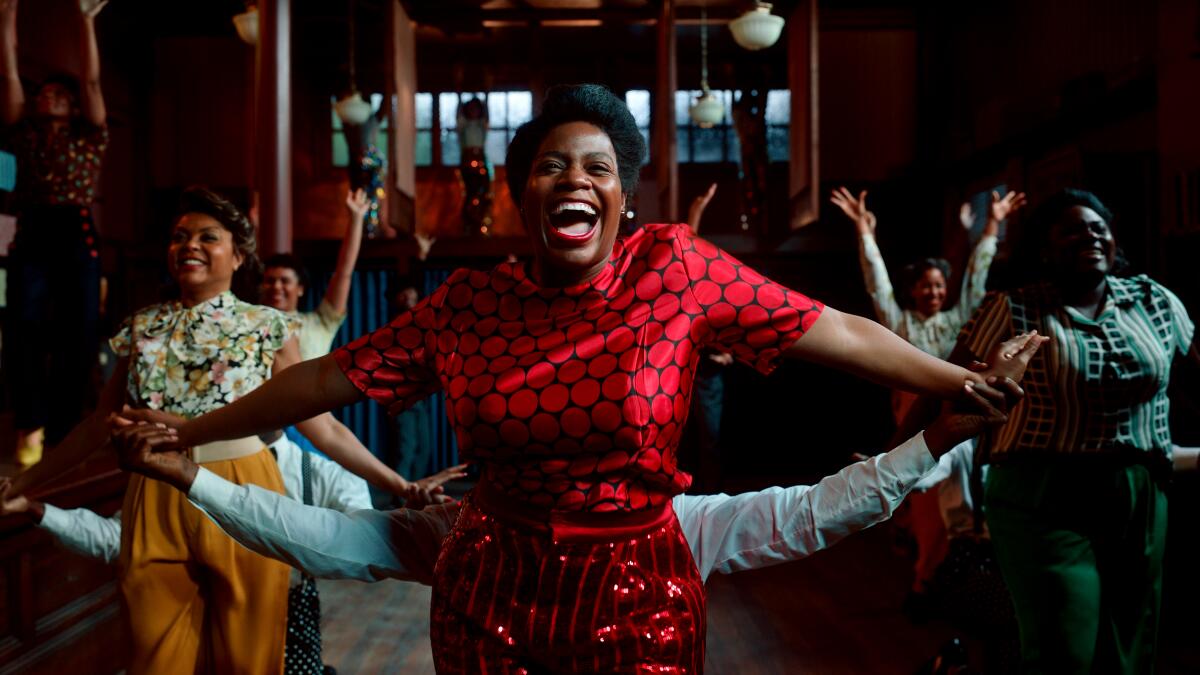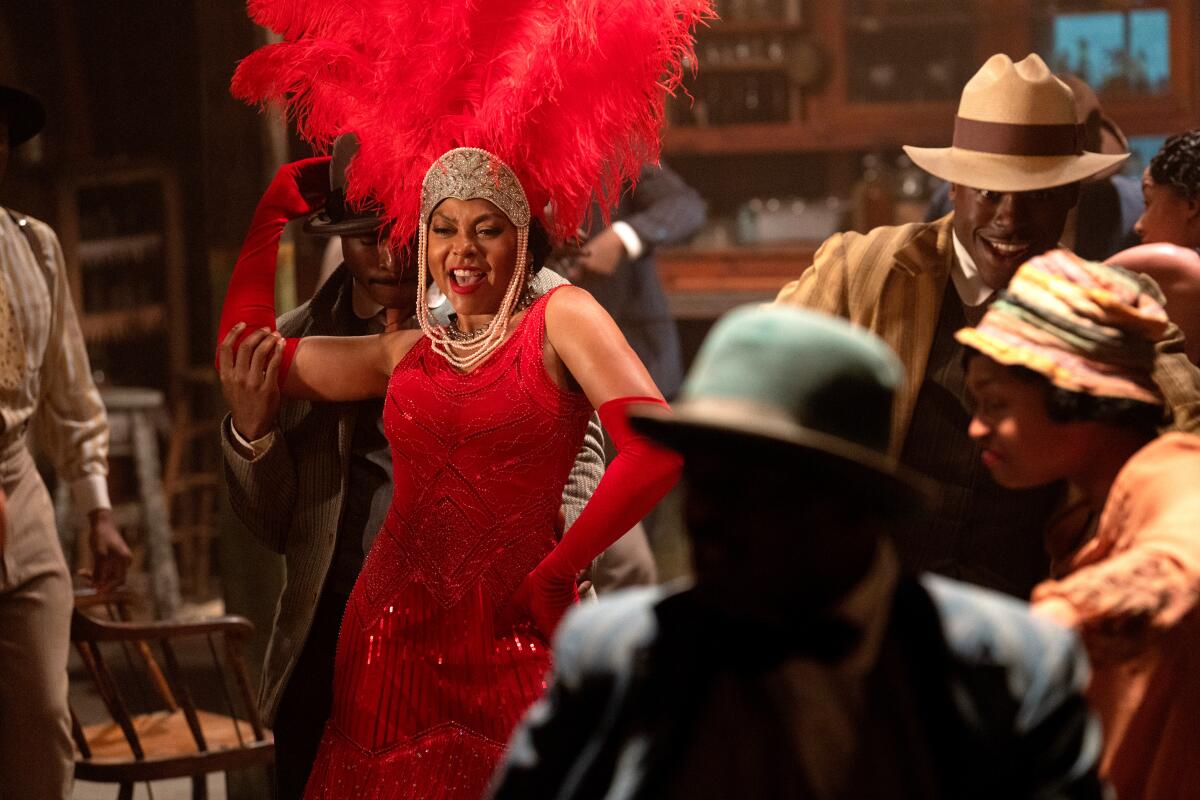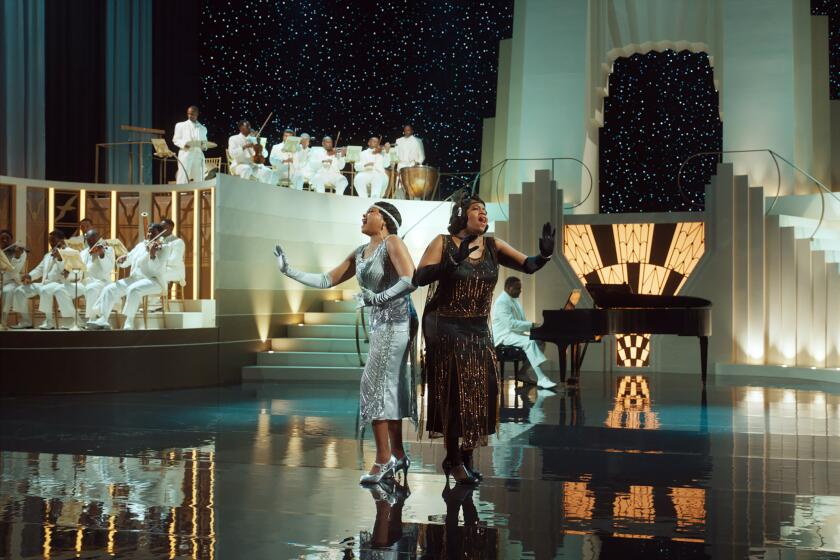‘The Color Purple’ returns to the screen, more vibrant and truer to Alice Walker’s novel

- Share via
In its many incarnations, “The Color Purple” is one of those indelible, unforgettable American texts. From Alice Walker’s Pulitzer Prize-winning 1982 novel to Steven Spielberg’s Oscar-nominated 1985 film and the 2005 Broadway musical (revived, to much Tony acclaim, in 2015), the story now comes full circle with this new movie adaptation of the musical, directed by Blitz Bazawule. It’s a tale of female strength, perseverance and solidarity that continues to resonate and wring you out with each iteration, breaking you down and uplifting you with its saga of a sisterly bond that persists despite the odds against it.
A Ghanaian filmmaker, musician and author, Bazawule is an ideal match for the material. He breathes an energetic musicality and artistry into every frame, while cinematographer Dan Laustsen never lets the camera rest, swirling and spinning in step with the cast of talented performers as they tackle songs from the stage musical (written by Brenda Russell, Allee Willis and Stephen Bray), as well as new music written for the movie.
“The Color Purple” is about two sisters living on the Georgia coast in the early 20th century, separated as teens by the brutality of men . Young Celie (Phylicia Pearl Mpasi), abused by her father, Alfonso (Deon Cole), is sold into marriage to the violent and lecherous Mister (Colman Domingo). Her beloved sister Nettie (Halle Bailey) flees the advances of both men and finds work as a teacher in Africa, though the sister’s written correspondence is intercepted by Celie’s cruel husband.
Musician-turned-filmmaker Blitz Bazawule talks about transforming Alice Walker’s deeply moving book “The Color Purple” into an inventive musical that leans into Celie’s imagination.
Meek and abused, an older Celie (Fantasia Barrino) finds salvation and inspiration in two very different women. Her stepdaughter-in-law Sofia (Danielle Brooks) bursts onto the scene like a bracing breath of fresh air, a sassy and self-possessed woman who has fought for her confidence and has no problem saying “hell no” to anyone who might try to put her down.
Then there’s Shug Avery (Taraji P. Henson), a sultry, sensual blues singer who teaches Celie about the power to be found in pleasure. It’s through the lessons she learns from these women that Celie sees a path forward for herself, opening the door for Nettie’s return.

Bazawule’s approach to the material is modern while paying homage to the traditions of Broadway musicals. Song-and-dance numbers that would be at home on the boards of the Great White Way break out on the dirt roads of Georgia, the performers’ feet kicking up dust filtered with lazy Southern sunlight. Laustsen’s camera floats overhead like a spiritual presence, capturing the choreography Busby Berkeley-style. The film is imbued with references to classical Hollywood, but it’s also decidedly of its own moment, when the juke joints were built on swamps and where Spanish moss drips from the oak trees.
The craft is gorgeous, but “The Color Purple” would be nothing without its star turns, and Bazawule’s cast takes your breath away. Domingo is terrifying as Mister, and Corey Hawkins proves there’s nothing he can’t do on stage or screen playing Harpo, Mister’s son and Sofia’s on-and-off-again beau. Henson burns the house down as Shug, and Barrino, making her film debut, delivers a stunning performance as Celie, holding the emotional center over decades.
Steven Spielberg, a Broadway show and now a movie musical all have tried to capture the queer love story in Alice Walker’s novel. Here’s how they did it — and why some argue they’ve all failed.
However, it’s Brooks who waltzes in and steals the whole movie out from under everyone else with her sly, spirited Sofia. She brings fire, humor and grit to a character who undergoes a dramatic, tragic arc. Her “Hell No” is a barn-burner of a song, and Brooks makes the most of her screen time, electrifying every frame she’s in.
In translating a book to a movie (again) via a stage musical, there are bound to be transformations along the way — it will not be the same, and this “Color Purple” is no exception. But what remains the same are the raw emotions, the authenticity of the characters and the enduring power of its message. While it tackles dark material, over the course of its journey, it will make you want to stand up and cheer, again and again.
Katie Walsh is a Tribune News Service film critic.
'The Color Purple'
Rating: PG-13, for mature thematic content, sexual content, violence and language
Running time: 2 hours, 20 minutes
Playing: Starts Dec. 25 in wide release
More to Read
Only good movies
Get the Indie Focus newsletter, Mark Olsen's weekly guide to the world of cinema.
You may occasionally receive promotional content from the Los Angeles Times.












